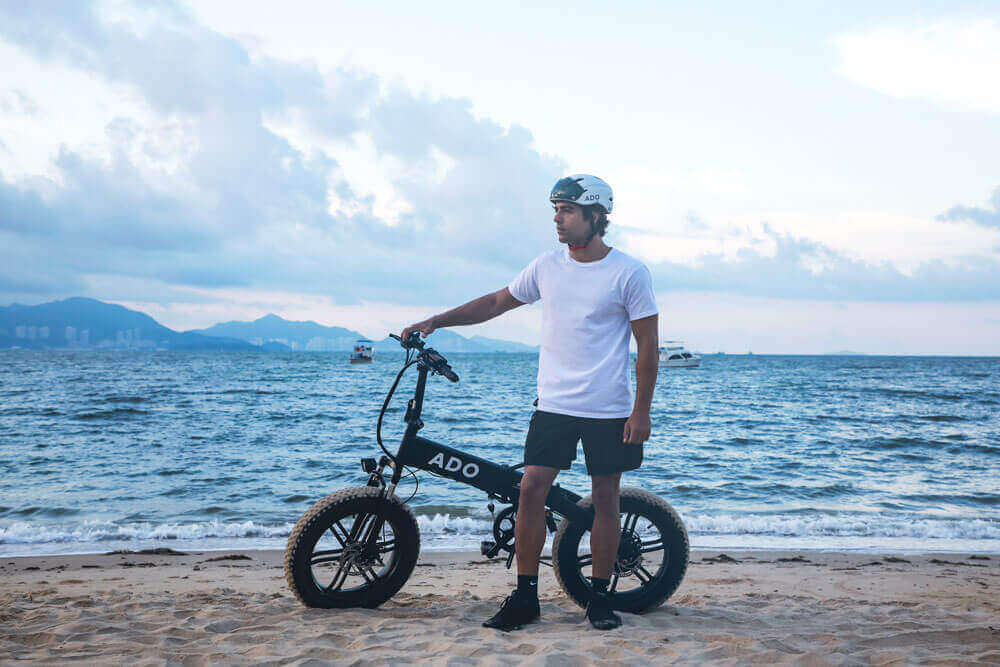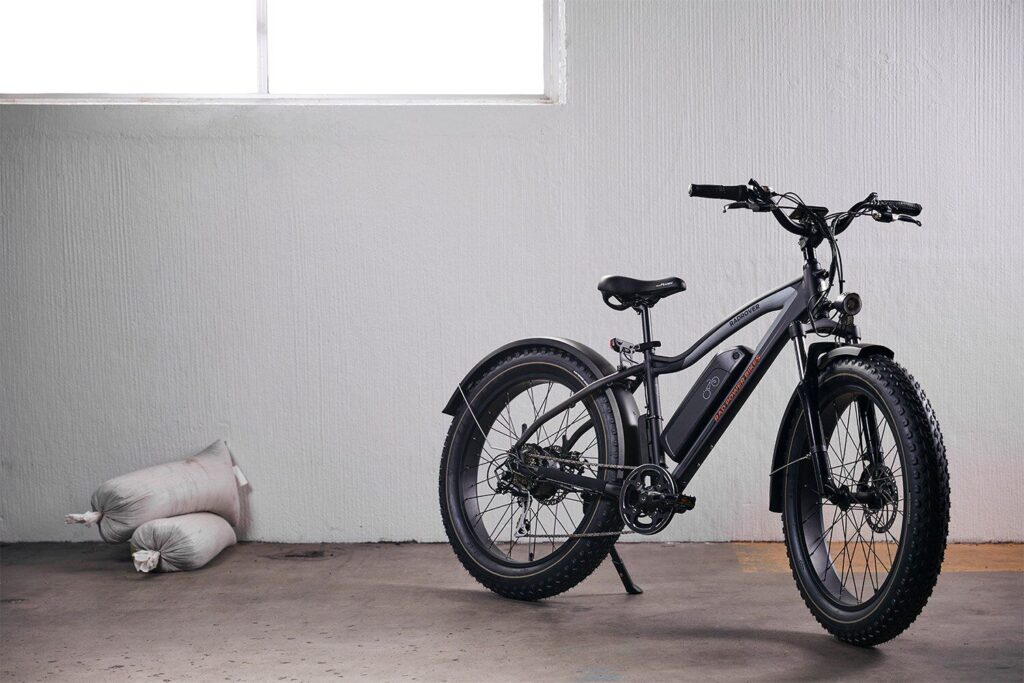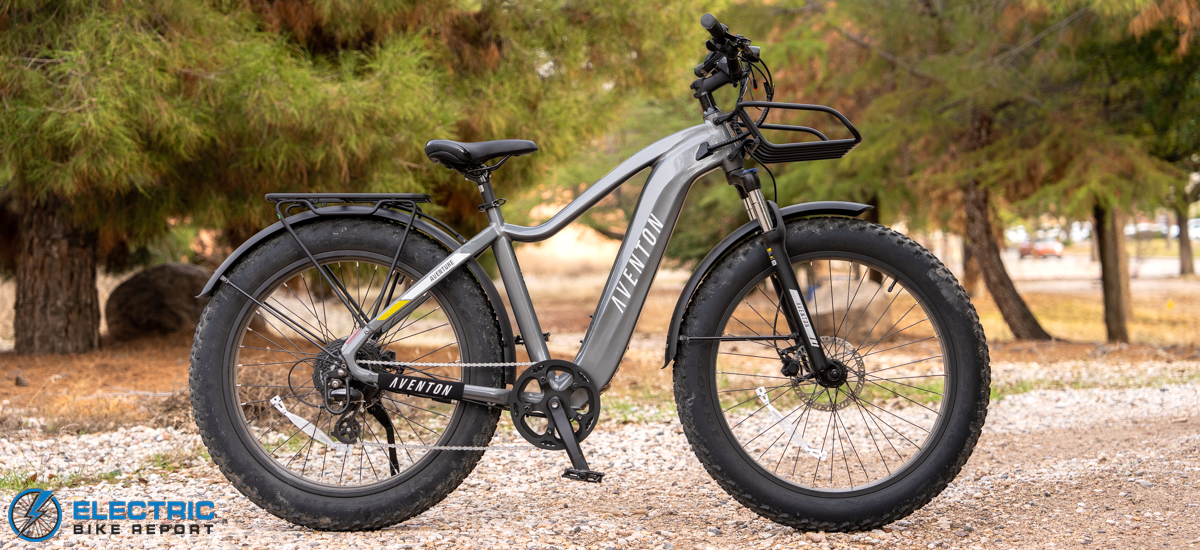If you’ve been considering purchasing a fat tire e-bike, but aren’t quite sure where to start, look no further! Your Ultimate Guide to Buying a Fat Tire E-bike is here to provide you with all the information you need. Whether you’re a beginner or a seasoned bike rider, this series of posts in the “Beginner E-Bike Tips” category is designed to be a comprehensive resource for all. From understanding the basics of riding electric bikes in urban or off-road environments to step-by-step guides and essential tips, this guide will help you transition smoothly into a confident e-biker. Get ready to explore the world of fat tire e-bikes and find the perfect ride for your adventures!
1. Understanding Fat Tire E-bikes
1.1 What are Fat Tire E-bikes?
Fat Tire E-bikes are a special type of electric bikes that are equipped with wide, oversized tires. These bikes are specifically designed to handle challenging terrains such as snow, sand, or mud. The fat tires provide increased traction and stability, allowing riders to navigate through rough surfaces with ease. Fat Tire E-bikes are known for their durability and excellent off-road capabilities.
1.2 Benefits of Fat Tire E-bikes
There are several benefits to owning a Fat Tire E-bike. Firstly, the wide tires create a larger contact patch with the ground, which results in improved stability and balance. This makes Fat Tire E-bikes suitable for riders of all skill levels, including beginners. Additionally, the fat tires act as natural shock absorbers, providing a smoother and more comfortable ride, especially on uneven terrain.
Another advantage of Fat Tire E-bikes is their versatility. These bikes perform exceptionally well on various types of terrain, including sand, snow, gravel, and trails. Whether you’re exploring the wilderness or simply commuting through the city streets, a Fat Tire E-bike can handle it all.
Furthermore, the electric motor on a Fat Tire E-bike provides assistance when riding uphill, against strong headwinds, or for longer distances. This makes it easier to tackle challenging routes and expands the range of your adventures. Fat Tire E-bikes offer a fun and efficient way to explore the outdoors while enjoying the benefits of electric assistance.
1.3 Uses and Terrain
Fat Tire E-bikes are incredibly versatile and can be used for a wide range of activities. Whether you’re a thrill-seeker looking for off-road adventures or someone who enjoys a leisurely ride around town, a Fat Tire E-bike can meet your needs.
One of the primary uses of Fat Tire E-bikes is for off-road adventures. The larger tires provide excellent traction and stability, allowing riders to conquer various terrains with ease. Whether you’re exploring rugged trails, rocky mountains, or sandy beaches, a Fat Tire E-bike can handle the challenge.
Fat Tire E-bikes are also great for commuting and urban exploration. The wider tires provide enhanced stability on city streets, and the electric motor assistance helps riders tackle hilly terrain or maintain higher speeds without exerting excessive effort. With a Fat Tire E-bike, you can effortlessly navigate through traffic and reach your destination in style.
1.4 Who Should Consider a Fat Tire E-bike
Fat Tire E-bikes are suitable for a wide range of individuals. If you enjoy outdoor activities and want to explore off-road trails or venture into remote areas, a Fat Tire E-bike is a perfect choice. These bikes offer the necessary stability and traction to tackle challenging terrains, ensuring that your adventures are safe and enjoyable.
If you’re a commuter who wants to avoid traffic congestion and reach your destination quickly, a Fat Tire E-bike can be a great alternative to traditional transportation methods. The electric motor assistance allows for faster speeds and effortless uphill climbs, making your daily commute a breeze.
Even if you’re new to cycling or have limited physical fitness, a Fat Tire E-bike can still be a suitable option. The wide tires provide excellent balance and stability, giving beginners the confidence to ride comfortably and safely. The electric motor assistance also helps compensate for any physical limitations, allowing riders to go further and enjoy their rides without excessive exertion.
2. Evaluating Your Needs

This image is property of futuraride.com.
2.1 Determining Your Riding Style
Before purchasing a Fat Tire E-bike, it’s important to determine your riding style. Are you planning to use it primarily for off-road adventures, commuting, or a mix of both? Understanding your riding preferences will help you choose the most suitable features and specifications for your needs.
2.2 Identifying Your Riding Terrain
Consider the type of terrain you’ll be riding on. Do you live in an area with mostly flat roads or are you planning to tackle more demanding trails and terrains? Fat Tire E-bikes are designed for off-road use, but the specific features required may vary depending on the type of terrain you’ll be navigating.
2.3 Assessing Battery Range
The battery range is an essential factor to consider when purchasing a Fat Tire E-bike. It determines how far you can ride before needing to recharge the battery. Take into account the average distance you plan to ride and ensure that the battery range of the bike you choose aligns with your needs.
2.4 Considering Bike Weight and Size
The weight and size of the Fat Tire E-bike are crucial factors to consider, especially if you plan to transport or store the bike. Heavier bikes may be more stable and durable, but they can be challenging to maneuver or load onto a vehicle. Additionally, ensure that the bike’s frame size is suitable for your height and offers a comfortable riding position.
3. Motor and Power Features

This image is property of electricbikereport.com.
3.1 Types of E-bike Motors
Fat Tire E-bikes come with different types of motors, each offering its own advantages. The most common types include hub motors and mid-drive motors.
Hub motors are located within the hub of the wheels and provide direct power to the wheels. They are known for their simplicity and ease of maintenance. Hub motors are generally quieter and offer a smoother riding experience. However, they may not perform as well on steep hills or challenging terrains.
Mid-drive motors are located around the bike’s pedals and drive the crankshaft. They offer a more natural riding experience as the motor’s power is directly applied to the bike’s drivetrain. Mid-drive motors are known for their better balance, weight distribution, and improved handling on varied terrains.
3.2 Motor Power and Performance
The power of the motor is measured in watts. A higher wattage typically means more torque and more assistance when riding. Consider your intended use and the type of terrain you’ll be riding on to determine the appropriate motor power. If you plan to conquer steep hills or challenging terrains, a higher-powered motor would be beneficial.
3.3 Pedal Assist Levels
Fat Tire E-bikes often come with multiple pedal assist levels, allowing riders to choose the amount of electric assistance they desire. Pedal assist levels vary from minimal assistance, where riders exert more effort, to higher levels that provide maximum assistance. Consider your fitness level, the type of terrain, and the range you need to determine the pedal assist levels that will suit your preferences.
4. Battery and Range
4.1 Battery Capacity and Voltage
The capacity and voltage of the battery determine the energy it can store and deliver to the motor. Higher capacity batteries usually offer longer ranges but may also be heavier. Consider your expected riding distance and duration to choose a battery with sufficient capacity and voltage to meet your needs.

This image is property of electrek.co.
4.2 Calculating Battery Range
The battery range refers to the distance you can travel on a single charge. The range can vary based on various factors, including the battery capacity, motor power, pedal assist level, and terrain. Manufacturers often provide estimates of the battery range, but it’s important to consider real-world conditions and adjust your expectations accordingly.
4.3 Recharge Time and Charging Options
The recharge time of the battery is an important consideration, especially if you have a busy schedule or depend heavily on your Fat Tire E-bike for commuting. Some batteries can be fully charged in a few hours, while others may take longer. Additionally, consider the availability of charging options, such as standard wall outlets or portable charging stations, to ensure convenience and flexibility.
5. Frame and Tire Considerations
5.1 Frame Materials
Fat Tire E-bikes’ frames can be constructed from various materials, including aluminum, steel, and carbon fiber. Each material has its own characteristics and affects the bike’s weight, durability, and ride quality. Aluminum frames are lightweight and corrosion-resistant, while steel frames offer durability and strength. Carbon fiber frames provide excellent stiffness and vibration damping properties but can be more expensive.
5.2 Frame Geometry and Suspension
The frame geometry and suspension system play a crucial role in the overall ride quality and comfort of a Fat Tire E-bike. Consider the type of riding you’ll be doing and choose a frame geometry and suspension setup that best suits your needs. Full suspension bikes are ideal for tackling challenging off-road terrains, while hardtail bikes with front suspension offer a balance between efficiency and comfort.

This image is property of electricbikereport.com.
5.3 Tire Width and Tread Patterns
The width and tread pattern of the tires significantly impact the traction, stability, and performance of a Fat Tire E-bike. Fat tires are characterized by their wide width, typically ranging from 3.8 to 5 inches. Wider tires provide better floatation on soft terrain and enhanced stability on rough surfaces. The tread pattern should be chosen based on the type of terrain you’ll be riding on, such as more aggressive treads for off-road adventures or smoother treads for commuting.
6. Braking System
6.1 Disc Brakes vs. Rim Brakes
Fat Tire E-bikes can be equipped with either disc brakes or rim brakes. Disc brakes offer superior stopping power and perform well in various weather conditions. They are less affected by mud, water, or snow on the rims, ensuring consistent braking performance. Rim brakes, on the other hand, are less expensive and easier to maintain. Consider your riding style and the conditions you’ll be riding in to decide which braking system is most suitable for you.
6.2 Hydraulic vs. Mechanical Brakes
Both disc brakes and rim brakes can be further categorized as either hydraulic or mechanical. Hydraulic brakes offer better modulation and require less pressure on the levers to achieve effective braking. They are known for their smooth and responsive performance. Mechanical brakes, on the other hand, are more affordable and easier to repair and maintain. Consider your budget and desired braking performance to choose between hydraulic and mechanical brakes.
6.3 Brake Performance and Maintenance
Regardless of the type of brake system you choose, regular maintenance is essential to ensure optimal performance and safety. Periodically check and adjust the brake pads, inspect the rotors or rims for wear, and replace any worn-out components. Consult the manufacturer’s guidelines and consider professional servicing if you’re unsure about performing brake maintenance yourself.
7. Shifting and Gearing

This image is property of cdn-acpan.nitrocdn.com.
7.1 Understanding Gear Systems
Fat Tire E-bikes usually come with a variety of gears to accommodate different riding conditions. The gear system consists of a chain, derailleur, and cassette or internal gear hub. Gear systems allow riders to efficiently pedal at different speeds and gradients, ensuring optimal power output and cadence.
7.2 Number of Gears
The number of gears on a Fat Tire E-bike can vary. More gears provide a wider range of choices, allowing riders to find the most suitable gear for any situation. However, more gears also mean increased complexity and maintenance. Consider the type of terrain you’ll be riding on and the range of gears required to select a bike with an appropriate number of gears.
7.3 Gear Ratio and Range
The gear ratio determines the relationship between the front and rear gears and affects the bike’s climbing ability and top speed. A wider gear range provides more flexibility to handle varying terrains. Consider your preferred riding style and the type of terrain you’ll be riding on to choose a Fat Tire E-bike with an appropriate gear ratio and range.
8. Comfort and Fit
8.1 Choosing the Right Frame Size
Selecting the right frame size is crucial for your comfort and safety. An ill-fitting frame can lead to discomfort, aches, and potential injuries. Consider your height, inseam measurement, and riding preferences to determine the frame size that offers a comfortable riding position and proper leg extension.
8.2 Ergonomics and Adjustable Components
Ensure that the Fat Tire E-bike you choose offers adjustable components, such as handlebars and stems, to fine-tune your riding position. Ergonomically designed components enhance comfort and reduce strain on your body, allowing for longer, more enjoyable rides. Consider your flexibility and riding preferences when evaluating the ergonomics and adjustability of the bike’s components.
8.3 Suspension and Seat Options
The suspension system and seat contribute significantly to the overall comfort of a Fat Tire E-bike. Full suspension bikes are ideal for off-road adventures, as they absorb impacts and provide a smoother ride. Hardtail bikes with front suspension offer a balance between efficiency and comfort. Additionally, choose a seat that provides adequate padding and support for a comfortable riding experience.
9. Additional Features and Accessories
9.1 Lights and Reflectors
Lights and reflectors are essential for ensuring visibility and safety, especially when riding in low-light or dark conditions. Check if the Fat Tire E-bike you’re considering comes equipped with lights or if you’ll need to purchase them separately. Front and rear lights, as well as reflectors on the wheels and pedals, are crucial for enhancing your visibility on the road.
9.2 Fenders and Mudguards
Fenders and mudguards are useful accessories, especially if you’ll be riding in wet or muddy conditions. They protect you and the bike from splashes of water, mud, and other debris, ensuring a cleaner and more comfortable ride. Additionally, fenders and mudguards help prevent excessive wear and tear on the bike’s components.
9.3 Cargo Racks and Panniers
If you plan to use your Fat Tire E-bike for commuting or running errands, consider the availability of cargo racks and panniers. These accessories provide additional storage space, allowing you to carry groceries, backpacks, or other items securely. Ensure that the bike you choose has provisions for attaching cargo racks or consider aftermarket options if necessary.
10. Budget and Value for Money
10.1 Setting Your Budget
Before starting your search for a Fat Tire E-bike, it’s essential to determine your budget. Electric bikes can vary significantly in price, depending on the brand, features, and specifications. Setting a budget range will help narrow down your options and ensure that you find the best value for your money.
10.2 Comparing Features and Prices
Once you have a budget in mind, compare the features and specifications offered by different Fat Tire E-bike models within your price range. Consider factors such as motor power, battery range, frame materials, and additional accessories. Analyze how well each bike aligns with your needs and preferences to make an informed decision.
10.3 Evaluating Warranties and Customer Support
When purchasing a Fat Tire E-bike, it’s important to consider the warranty offered by the manufacturer and the level of customer support available. A comprehensive warranty can provide peace of mind in case of any manufacturing defects or issues with the bike. Additionally, good customer support ensures that you’ll have assistance whenever you need it, whether for troubleshooting or maintenance.
Remember, investing in a quality Fat Tire E-bike is a long-term investment in your outdoor adventures, commuting convenience, and overall well-being. Take your time, do thorough research, and evaluate your needs to find the perfect Fat Tire E-bike that will provide years of enjoyment and reliable performance. Happy riding!




